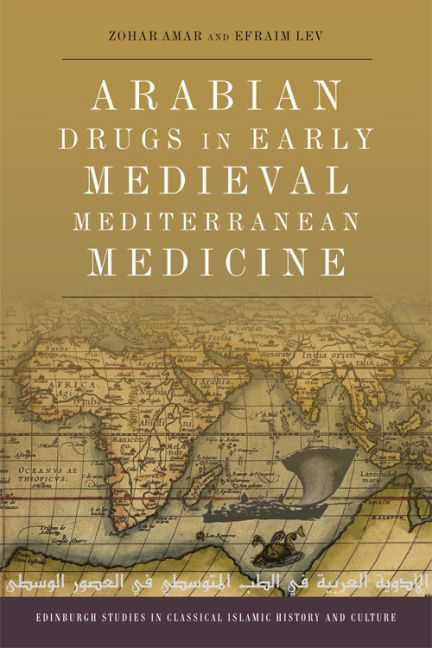Book contents
- Frontmatter
- Contents
- List of Plates
- List of Tables
- Preface
- Map: The Origin of the Main Medieval Arabian Drugs
- 1 Introduction
- 2 Agricultural and Pharmaceutical Innovations: Milestones in Research and Case Studies
- 3 ‘Arabian’ Substances
- 4 Discussion and Conclusions
- Bibliography
- Index of English Names
- Index of Arabic Names
- Index of Scientific Names
Preface
Published online by Cambridge University Press: 27 April 2017
- Frontmatter
- Contents
- List of Plates
- List of Tables
- Preface
- Map: The Origin of the Main Medieval Arabian Drugs
- 1 Introduction
- 2 Agricultural and Pharmaceutical Innovations: Milestones in Research and Case Studies
- 3 ‘Arabian’ Substances
- 4 Discussion and Conclusions
- Bibliography
- Index of English Names
- Index of Arabic Names
- Index of Scientific Names
Summary
For more than 1,000 years Arab medicine held sway in the ancient world, from the shores of Spain in the West to China, India and Sri Lanka (Ceylon) in the East. Arabic medical heritage, in its late practice, was in fact based on a conglomerate of diverse cultural foundations: Greek, Indian, Persian, Mesopotamian, Syrian, Egyptian, Slavic, Spanish and North African (Maghrib).
To our knowledge, no research assessing the relative contribution of each of these components has been done, yet most scholars seem to agree that the influence of the Greek medical heritage, on the one hand, and the Indian medical heritage, on the other, were the cornerstones of Arab medicine. We argue that this process was a ‘melting pot’ in which various scientific and political elements interacted – first, the physicians of the Galenic school versus those of the Indian and Zoroastrian schools and, later, the Near Eastern physicians versus the Andalusian ones. Various cultural and religious elements played a part in this process – stemming from Christians, Jews and Muslims – but they all shared an ‘Arab’ background and identity and, therefore, we are of the opinion that the term Arab Medicine is apposite and more appropriate in this case than that of Muslim Medicine.
This period is characterised mainly by the dissemination and documenting of the Classical knowledge, yet also by innovation and originality. This co-existence generated a radical transformation in the spiritual and physical cultures, as well as the daily life in the Middle East, which were conveyed from there to the West.
Most of the medicinal substances introduced by the Arabs originated in Southeast Asia; the ways in which they were distributed and assimilated into the Mediterranean region varied, however. Our research focuses on the main substances about which sufficient information was accumulated and that enabled clear-cut identification and assessment of their importance to medieval medicine. The ‘new’ medicinal substances enriched the existing inventory of drugs that was influenced basically by Galenic–Arab pharmacology; some even came to occupy a pivotal position in the practical medicine of the medieval period, such as various kinds of myrobalan.
- Type
- Chapter
- Information
- Arabian Drugs in Early Medieval Mediterranean Medicine , pp. x - xiiiPublisher: Edinburgh University PressPrint publication year: 2017

